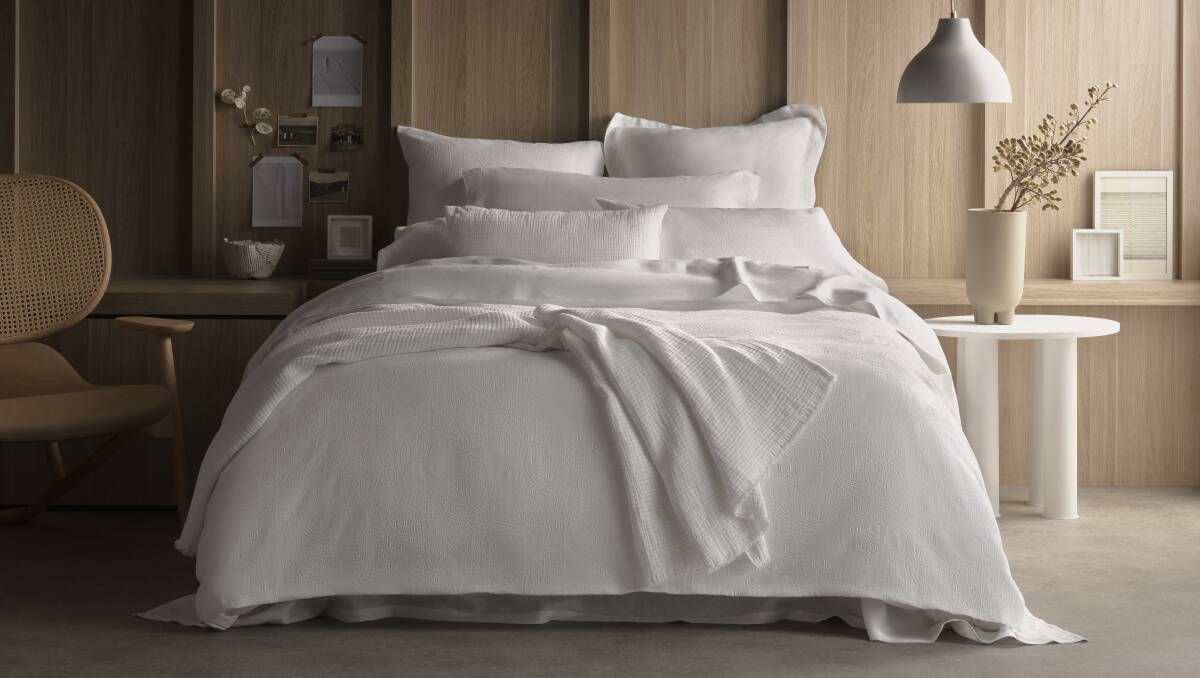
Do you know the difference between a bedspread and a coverlet? If the answer is no, you’re not alone – bedding 101 contains more information than you could stuff into a king size mattress.
Luckily Joanna Ross, general manager of innovation and product at Sheridan has answered all your long-held bedding questions.
What should you look for when choosing a pillow?
The aim is to have the best possible sleep and rest experience, so ideally you should start by thinking about what your sleep position might be. Do you sleep on your back, side or front? Do you prefer a soft or firmer feel? Your selection may also be driven by a particular profile or height.
Do different pillow fillings reflect quality, or should your choice be determined by individual needs?
Pillow filling is chiefly determined by what suits you. Quality is generally dictated by a sum of parts, rather than one thing. For example, quality construction and outer cover fabrics all add up to a better pillow. But matching your own requirements and preferences for feel is the perfect first stop.
What’s the difference between a bedspread and coverlet?
This is largely just a difference in language, and sometimes even where you grew up! But generally, it is accepted that a “coverlet” is a quilted bed cover. It is a great choice either to add extra warmth on top of your bedding in winter – or a perfect, lighter finishing touch for summer months.
A bedspread is generally all about a finishing touch, or look. These can be a single layer of fabric – or in some cases, may also have quilting or other details for finish. You can use any fabric or layer as a bedspread.
How do you decipher thread counts when you’re in the manchester store?
Thread count is one of a number of components that may be considered in bedding. Generally, a higher thread count is possible in a sateen weave, so goes hand in hand with a lustre and certainly means a heavier weight.
It is worth remembering that having the highest thread count you can find won’t result in the best fabric or feel if the cotton itself is poor quality, the yarn is irregular or the way the fabric is finished is not optimum.
If you sleep warm and prefer a drier, crisper feel sheet, you may prefer a percale, which will always have a lower thread count due to the nature of the square-weave.
When shopping for a linen, it is provenance and finish, not thread count that will be your consideration. Like most things sleep related, your first instinct should be to go for a feel you like first.
How should you care for your bedding?
When you find a sheet you love and want to stick with, it is recommended that you invest in another similar one when you can so you can rotate regularly – ideally washing weekly. This will ensure the best longevity for your favourites. The specifics around laundering for all your bedroom items will depend on the particular care instructions for the item and fabric. It is worth remembering that if you are planning to wash at home, that your machine should have large enough capacity for the bulkier items.
Thoroughly rinsing all detergent and ensuring your bedding is completely dry before folding and storing will set you up to avoid discolouration or marks over time. In addition, using fabric bags to store your bedding will not only help you to stay organised, but also keep your product in great condition.
Do you really need to wash new purchases before making the bed?
Washing your bedding when you get it home from the store is non-negotiable! Firstly it has been folded and packaged for a long time and has come from the factory in general. The fabrics will all benefit from the refresh of washing and drying before your first night’s sleep, and it will ensure optimum comfort.
How often should you replace each item?
Well looked after, your decorative pieces can last as long as you love them. But try “reinventing” your look with the addition of smaller coordinates before moving them on.
From a lifespan point of view, your product’s longevity will, in part, depend on the attention to care and cleaning, but also rotation. So try where you can to have a few options in your bedding wardrobe.
